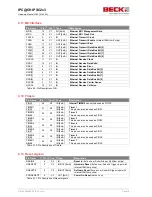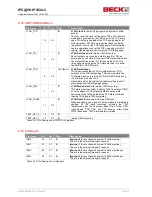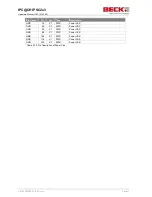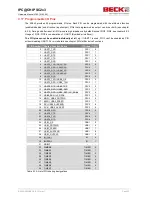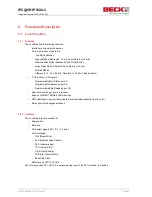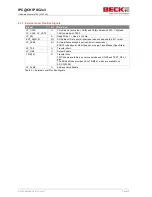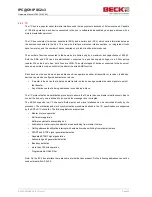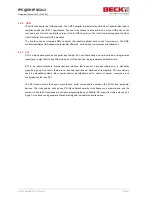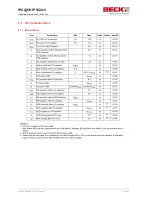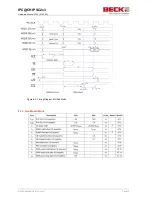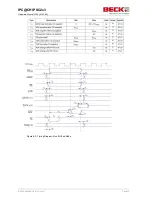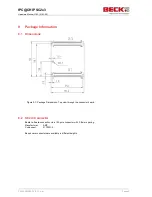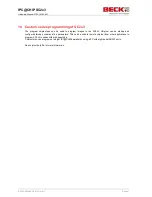
IPC@CHIP SC2x3
Hardware Manual V1.02 [01.03.09]
©2000-2009 BECK IPC GmbH
Page 32
6.2.6 CAN
The SC2x3 contains two complete CAN 2.0B controllers, CAN1 and CAN2. Each controller supplies two signal
pins, CAN Receive (CANRXD) and CAN Transmit (CANTXD). These signals can be connected to a CAN
transceiver.
The CAN controllers can be accessed through the RTOS API functions. In addition to the Run mode, the
controllers can be used in Loop Back mode or Passive mode. In Loop Back mode both CAN channels are
internally connected with themselves. This can be useful for software testing. In Passive mode the controllers
are only listening. The output is held recessively. The Run mode is the normal operating mode.
Various baud rates are provided. The following table shows the most common possible baud rates. For more
information to provided baud rates see RTOS API documentation.
50 KBit/s
125 KBit/s
250 KBit/s
500 KBit/s
1 MBit/s
Table 6-3: Provided CAN baud rates
The basic features of the CAN controllers are as follows:
Implementation of the CAN protocol - Version 2.0A/B
-
Standard and extended data frames
-
0 - 8 bytes data length
-
Programmable bit rate up to 1 Mbps
-
Support for remote frames
-
4 receive buffers with FIFO storage scheme
3 transmit buffers with inte
rnal prioritization using a ―local priority‖ concept
Flexible maskable identifier filter supports two full size extended identifier filters (two 32-bit) or four 16-bit
filters or eight 8-bit filters
Programmable loop back mode supports self-test operation
Programmable listen-only mode for monitoring of CAN bus
Separate signalling and interrupt capabilities for all CAN receiver and transmitter error states (Warning,
Error Passive, Bus-Off)

